Sheen Obsidian
Sheen obsidian is a type of volcanic glass that exhibits a unique iridescent or “sheen” effect when viewed in proper lighting. It is formed when lava cools rapidly and solidifies, trapping gas bubbles or layers of mineral inclusions within the glass.
These inclusions create a layering effect that reflects and refracts light, producing the distinctive sheen. This can be a silver, gold, or even rainbow colour.
Showing all 6 results
-
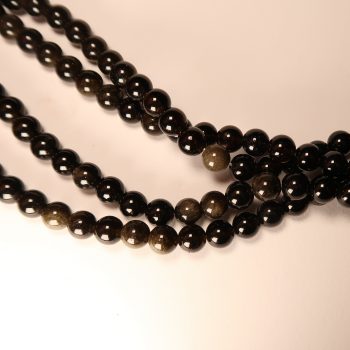
Obsidian bead strands (Sheen)
Price range: £3.00 through £5.00 -
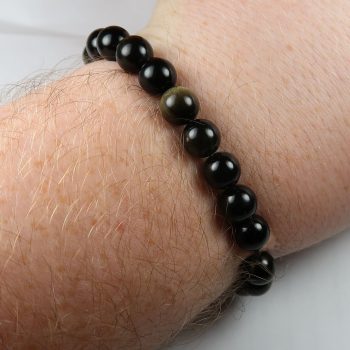
Obsidian bracelets (Gold sheen)
£5.95 -
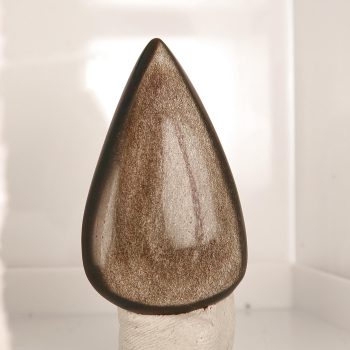
Obsidian cabochons (Sheen)
£5.00 -
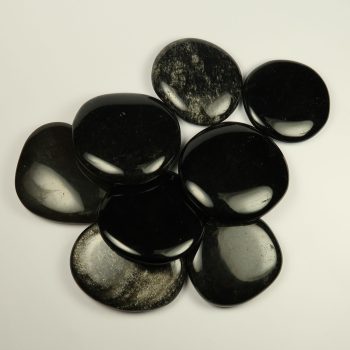
Obsidian Palmstones (Sheen)
Price range: £3.50 through £4.00 -
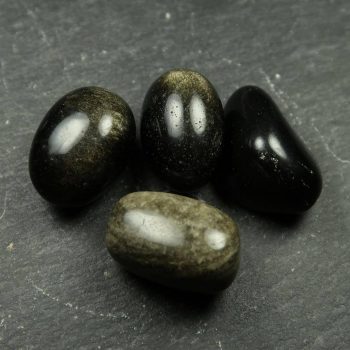
Obsidian Tumblestones (Gold Sheen)
Price range: £0.80 through £3.00 -
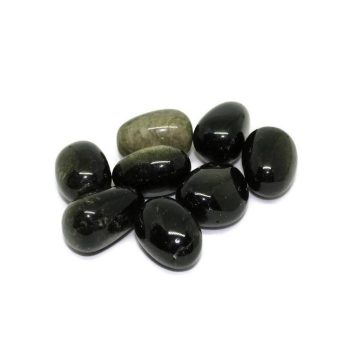
Obsidian Tumblestones (Silver Sheen)
Price range: £1.00 through £4.00
Information about Sheen Obsidian
Sheen obsidian is a volcanic glass that exhibits a metallic or iridescent sheen when light reflects off its surface.
This effect is caused by microscopic gas bubbles or mineral inclusions trapped during the cooling of molten lava. It is typically black or dark brown with a golden, silver, or bronze-like shimmer that becomes visible under direct lighting.
The sheen appears in layers or patches, giving the stone a striking visual effect.
Uses and History
Sheen Obsidian is primarily used for jewellery usage and in decorative objects. The decorative objects are often spheres, pyramids, and other ‘new age’ shapes and objects. The material is also often sold tumbled.
Obsidian has been used since prehistoric times for making weapons, tools, and ceremonial items – whether ‘sheen’ Obsidian was ever used specifically I’m afraid I couldn’t find any verifiable information.
Mineralogy
Black, dark brown, with golden, silver, or bronze sheen
Hazards and Warnings
Can be extremely sharp, and caution should be taken with the dust if this material is worked.
Mineral collectors should wash their hands after handling specimens, to avoid any exposure to potential toxins.
Almost all rocks, minerals (and, frankly, almost all other substances on earth) can produce toxic dust when cutting, which can cause serious respiratory conditions including silicosis.
When cutting or polishing rocks, minerals, shells, etc, all work should be done wet to minimise the dust, and a suitable respirator or extraction system should be used.
Translations
Arabic:
Hindi:
Portuguese:
Bengali:
Indonesian:
Punjabi:
English:
- sheen obsidian
Italian:
Russian:
- Блестящий обсидиан
French:
- Obsidienne chatoyante
Japanese:
- シーンオブシディアン
Spanish:
- Schimmernder Obsidian
German:
- Schimmernder Obsidian
Korean:
- 광택 흑요석
Thai:
Gujurati:
Mandarin Chinese:
- 光辉黑曜石
Urdu:
